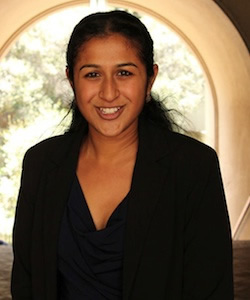My morning commute to class has visibly changed this past month. As I disembark at one of the central Copenhagen stations, I see that the bustling platforms have become home to groups of refugees passing through Copenhagen in hopes of reaching Sweden or gaining asylum in Denmark.
The refugee influx in Europe is no small matter. Driven by conflict-ridden conditions in their home countries, refugees from Syria and other nations are turning to Europe to escape the horrific conditions. This has led to an incredible amount of refugees passing through Greece and Italy to try and seek asylum in other European countries.
Denmark has a large role in this crisis. As per the Dublin Regulation, European Union countries must process asylum applications in the asylum seeker’s country of arrival. However, due to the sheer volume of refugees, entry countries such as Greece and Italy are overwhelmed, and the EU travel regulations facilitate refugee movement across Europe. Denmark has become a prime destination for refugees trying to cross to Sweden, which provides the ideal asylum system of offering permanent residence permits to asylum seekers. This leaves Denmark in a precarious position; though Dublin Regulation policies have been broken by virtue of the refugees arriving in Denmark, Denmark cannot just send refugees to Sweden without Swedish consent.
In fact, this is the problem with most EU countries. Germany and France, proponents of creating space for more refugees, are swamped by the implications of their open policies. The European Union had to vote on a plan to apportion 120,000 refugees across all member states—a regulation opposed by the Czech Republic, Hungary, Romania, and Slovakia, all of which are dealing with the drastic increase in refugees traversing their countries. Panicked governments are implementing harsh rules, such as Hungary’s newly built border fences and strict border controls in Austria.
What intrigues me is the multifaceted response from the Danish public regarding this issue. Even though the Danes are inconvenienced with travel controls between Denmark, Germany, and Sweden, they are generally open to accepting refugees. Welcome rallies, volunteers helping distribute supplies at train stations, and a charity television program with famous singers are all actions that locals have taken to support refugee inclusivity. It’s very hard to not sympathize with the refugee that approaches you on the train platform, holding a picture of his family and seeking help for family reunification.
However, I’ve also observed the negative perspectives toward the refugee crisis; earlier this month, a Dane randomly approached a few friends and me on the street to profess his opinion: “My home is turning into a prison cell.” A picture of a man spitting on a crowd of refugees walking along the highway is circulating media outlets. To crown these sentiments, the Danish government has even launched an “information campaign” to advertise messages about tightening of refugee policies, written in 10 different languages in Lebanese newspapers.
European residents tend toward two main arguments if they are promoting anti-refugee policies: economic opportunities and nationalist pride. But, over 70 percent of refugees are fleeing war-ravaged countries with the primary motive of achieving security. Though European governments have to set aside funds to support the refugees with housing, food, and living costs, this does not mean that refugees intend to “steal jobs” from the Europeans; they are merely seeking a safer life and stronger government accountability—a struggle much more poignant than just economic or nationalistic deprivation. In the words of Dania Kanakri, a 37-year-old Syrian refugee en route to Germany, refugees “don’t want to live in a war right now, and the rest of the world must acknowledge that.”
The ironic thing, for the Danish anti-refugee proponents, is that most refugees do not want to permanently reside in Denmark. Though the welfare state here is an ideal model to equally support all citizens, the Danish government has put forward a vague, anti-refugee stance by recently tightening refugee benefits, border controls, and family reunification opportunities. Moreover, the limited religious and cultural diversity in Denmark makes it harder for asylum applicants to feel comfortable with the country and the language.
The images of Danish policemen playing with Syrian refugee children and Danes offering to drive refugees to the Swedish border sharply contrast with the policies that Denmark is enforcing. With its high GDP, low foreign debt, and small population, Denmark has the resources to welcome refugees. The next few months will demonstrate whether the Danish government will shift to a more humanitarian stance to capitalize on this capacity.

